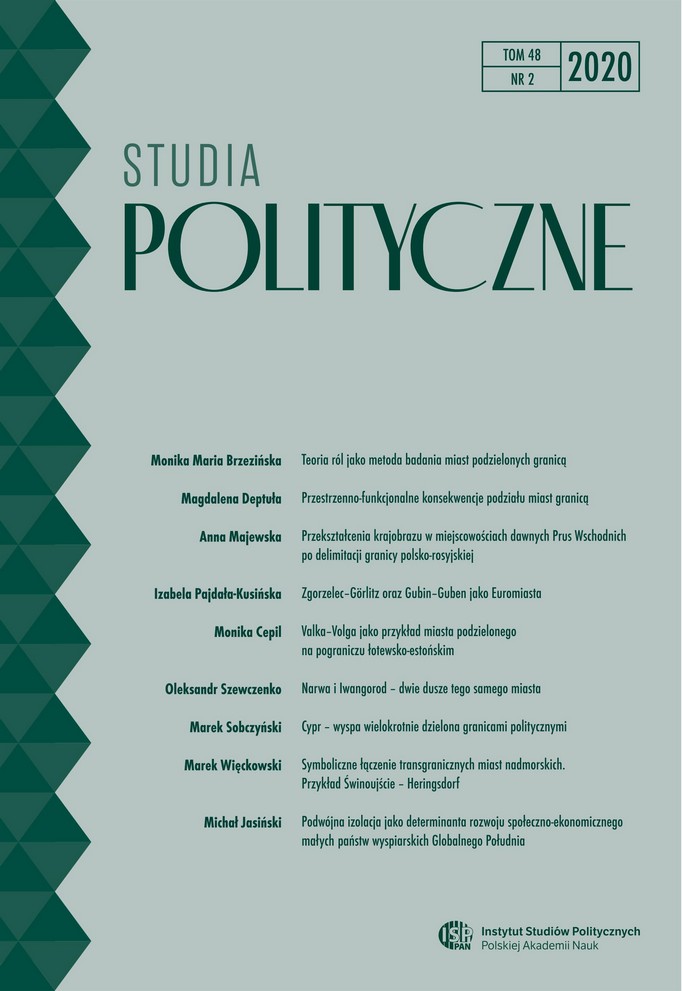Przestrzenno-funkcjonalne konsekwencje podziału miast granicą
Spatial and Functional Consequences of the Division of Citiesby a Border
Author(s): Magdalena DeptułaSubject(s): Politics / Political Sciences
Published by: Instytut Studiów Politycznych PAN
Keywords: divided city; political border; urban space; functional structure of cities;
Summary/Abstract: Cities divided by a state border constitute an extremely interdisciplinary issue. Research on them in various scientific disciplines emphasises the complex nature of the phenomenon and the multitude of problems that concern it and require attention. Most often they are the subject of political, economic or sociological studies, primarily involving the analysis of borders and their variability over time, economic cooperation, border movement and European integration. Spatial research is much less often undertaken, despite the fact that this dimension is one of the first to experience the consequences of the ‘division’. The tearing apart of an urban structure by a state border destroys the existing spatial cohesion of the urban organism and the network of functional connections it has created in the historical period of development. The aim of the study is therefore to discuss the spatial and functional effects of such a division and to formulate some general conclusions in this field based on the analysis of possibly different (for example, in terms of the origin and conditions of division, size and importance of centres in the settlement network) examples of divided cities, namely Jerusalem, Berlin, Nicosia and Gubin.
Journal: Studia Polityczne
- Issue Year: 48/2020
- Issue No: 2
- Page Range: 39-56
- Page Count: 18
- Language: Polish

